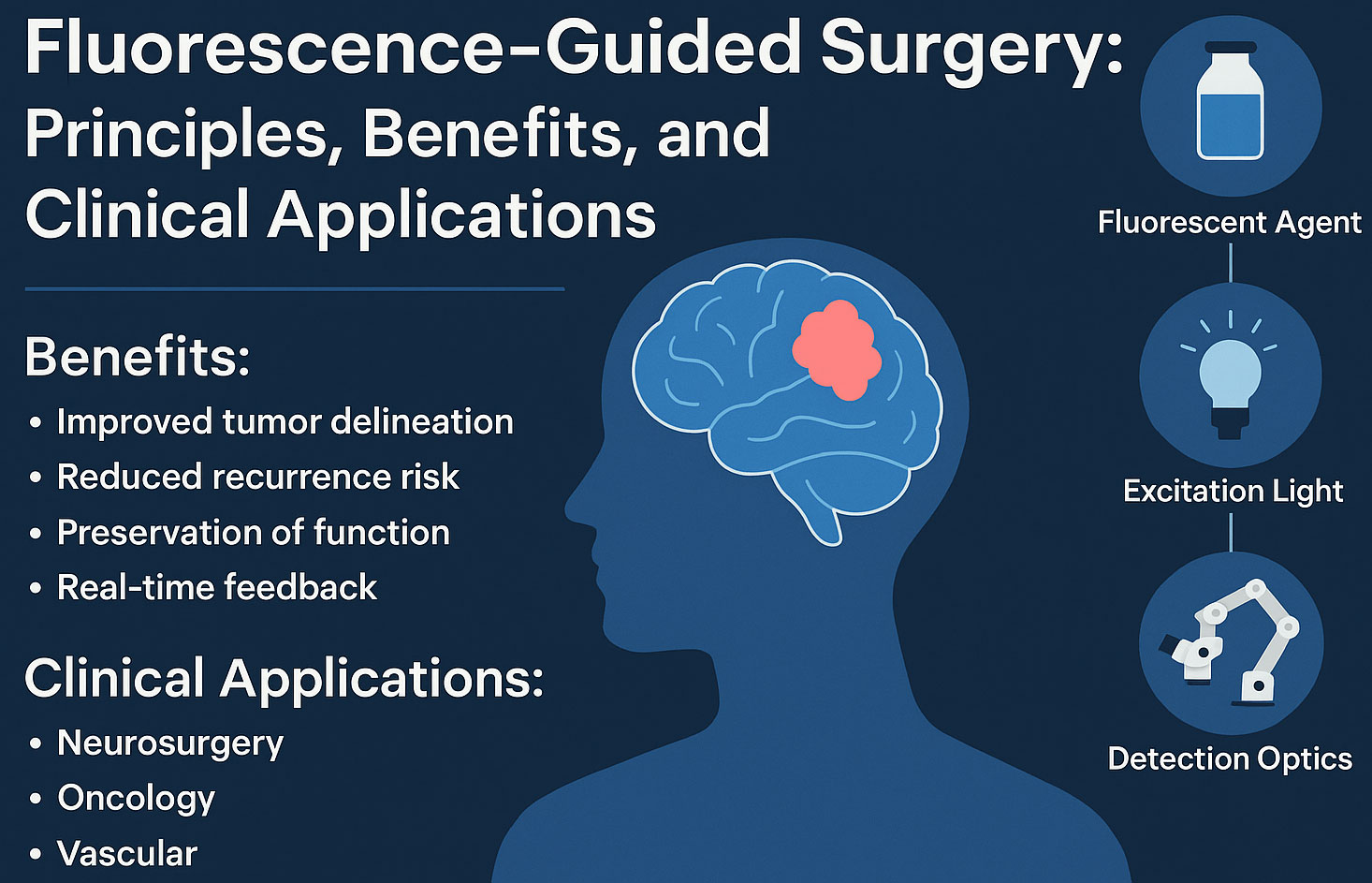Fluorescence-guided surgery (FGS) is an intraoperative imaging technique that uses fluorescent agents and optical filters to highlight target tissues in real time. It is particularly valuable for tumor delineation, helping surgeons achieve more complete resections while sparing healthy tissue. Looking for compatible microscopes? See our guide to Carl Zeiss OPMI Pentero 800, 800 S, and 900 and their fluorescence options (e.g., BLUE 400, YELLOW 560, INFRARED 800). Patients ingest 5-ALA, which tumor cells convert to protoporphyrin IX that fluoresces red under blue light. Surgeons visualize malignant margins in real time to guide resection. For a deeper dive into operating-room workflows, see Digital Integration & PACS Workflow in the OR. Equipment note: If you need fluorescence-ready optics, review the Zeiss OPMI Pentero 800/800 S/900 product line. FGS uses a fluorescent agent and specialized optics to highlight target tissues (e.g., tumors, vessels) in real time during surgery. The most widely used agents are 5-ALA (for glioma visualization), ICG (for angiography and perfusion), and fluorescein sodium (ophthalmology and select adjunct uses). FGS can improve delineation of malignant tissue, supporting more complete resections while preserving healthy structures. Outcomes depend on tumor type, surgical approach, and equipment. The light itself is not harmful at surgical intensities. Safety considerations relate to the agents (e.g., photosensitivity after 5-ALA, iodine allergy with ICG). Surgeons follow established dosing and monitoring protocols.Introduction

How Fluorescence-Guided Surgery Works
Example: 5-ALA for Brain Tumors
Key Benefits
Clinical Applications
Neurosurgery
Oncologic Surgery
Vascular & Reconstructive
Fluorophore Comparison
Fluorophore
Excitation (approx.)
Emission / Display
Main Clinical Use
Advantages
Limitations
5-ALA → Protoporphyrin IX
~405 nm (blue)
Red fluorescence
Neurosurgery (high-grade glioma)
High tumor specificity; real-time margin aid
Shallow penetration; oral dosing & photosensitivity precautions
Indocyanine Green (ICG)
~805 nm (NIR)
NIR signal (often rendered green)
Vascular flow, hepatic/biliary, lymphatics
Good tissue penetration; rapid angiography; widely available
Nonspecific uptake; transient signal; iodine allergy caution
Fluorescein Sodium
~490 nm (blue-green)
Yellow-green fluorescence
Ophthalmic, adjunct in tumor & vascular cases
Low cost; easy to use
Lower tumor specificity; rapid clearance; background noise
Challenges & Limitations
Future Directions
Frequently Asked Questions (FAQ)
What is fluorescence-guided surgery?
Which dyes are most common in FGS?
Does FGS improve the extent of tumor resection?
Is fluorescence harmful?
Terms of Content & Medical Disclaimer